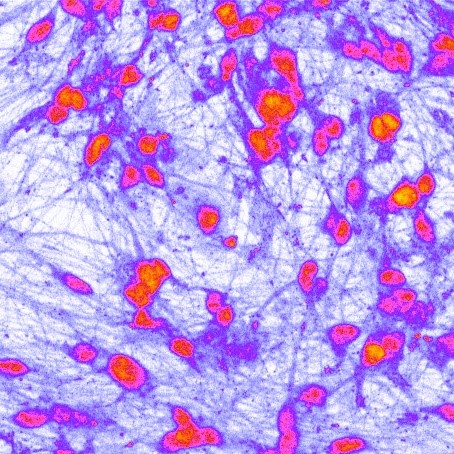Looger Lab
- Contact Us
- People
- Research

Psychedelic-induced neuroplasticity
Psychedelic-assisted psychotherapy has shown therapeutic promise for a number of neuropsychiatric conditions. For example, in patients with treatment-resistant depression, a single dose of adjunct psilocybin with ongoing psychotherapy can decrease symptoms in patients for many months to years. Psychedelics, like psilocybin, induce acute neuroplasticity, however the mechanisms underlying persistent effects remain unknown. With a brain-wide approach, we are systematically investigating the neural and molecular mechanisms underlying the persistent effects of psychedelics using the larval zebrafish as a model organism. Larval zebrafish are small and optically transparent, allowing for brain-wide imaging of neural activity at single-cell resolution. We use multiple levels of analysis from behavior to calcium-imaging to whole mount in situ labeling to characterize persistent drug-induced swimming behaviors, then ask what mechanisms are driving persistent functional effects.
Psychedelics and Inflammation
The clinical, recreational, and research interest in psychedelic compounds has increased exponentially in recent years. So too has the scope of investigation into how these compounds interact with biological systems. Hallucinogens, like Psilocybin, have been used for centuries across cultures, often involved in 'healing' ceremonies. Beyond encouraging states of acceptance and psychological well-being, we are investigating whether these compounds may improve clinical outcomes by acting as immunomodulatory agents interfacing directly with immune subsystems. Using mice as model of an in-tact, mammalian nervous system, we are investigating the anti-inflammatory properties of Psilocybin. Using a combination of in-situ hybridization and single-cell sequencing, we aim to measure region and cell-type specific changes in inflammation-related mRNA in response to Psilocybin.
Other work on psychedelics.. the lab focuses on what happens in addition to agonism of receptors. Using click-chemistry compatible psychedelics the lab is able to track where psychedelics go and what proteins they interact with. This work has led to new insights about the cellular and molecular mechanism that psychedelic drugs are involved with.